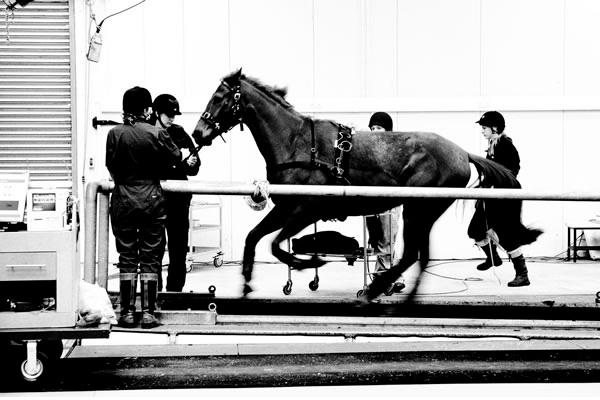Recurrent Laryngeal Neuropathy
Recurrent laryngeal neuropathy (RLN) is a disease of the recurrent laryngeal nerves that is common in horses. The term ‘laryngeal paralysis’ is sometimes used, but recurrent laryngeal neuropathy is a more accurate term, as immobility of both sides of the larynx is not present.
The length of the nerve is a factor, as the disorder is more common in larger horses and usually affects the left side of the larynx (the left nerve is longer than the right).
Causality and symptoms
As the nerve’s function declines, the muscles that open the larynx start to weaken with a consequent narrowing of the airway. This results in sounds being emitted, ranging from a whistle to a roar or gasping noise, especially at speed. Since air intake can be affected, horses often perform poorly when exercising.

Although the precise cause is unknown, researchers suspect genetic and acquired factors, and this is an active area of investigation at The Royal Veterinary College.
Diagnosis is usually achieved with laryngeal ultrasound, resting endoscopy and exercising endoscopy but the RVC group, in collaboration with others, has developed additional techniques including laryngeal CT, laryngeal electromyography and microscopic analysis, which increases the sensitivity of the diagnosis.

Treatment
The most commonly used existing treatment is aimed at restoring the diameter of the airway by ‘tying back’ the larynx in an open position at surgery. However, the success rate is only around 50% and many horses develop complications following surgery, including chronic lower airway disease (because their swallowing is affected) or the surgery fails and needs to be repeated. These complications can be career ending.
A significant progress in treatment in recent years has involved electrical stimulation of the affected muscle in the larynx. Functional Electrical Stimulation (FES) is used to directly stimulate the weakened muscle so that it contracts more strongly, both when stimulated electrically, but also with normal nerve stimulation.
In particular, the goal of FES is to produce a contraction that mimics a natural muscle contraction, without the need for the ‘tie back’ procedure, so that horses retain the ability to swallow effectively (thereby preventing the lower airway disease).
There have been significant improvements in FES technology in horses over the last decade, including the miniaturisation of implants. Eight weeks of stimulation in completely denervated muscle has been shown to halt muscle atrophy and increase the diameter of muscle fibres.
The procedure is currently being performed in horses with RLN at Cornell University College of Veterinary Medicine and at The Royal Veterinary College. We have shown that FES can also produce highly effective opening of the airway in horses with RLN.
Overall there have been promising results in improving muscle morphology and function after short-term FES treatments. However, inclusion criteria for horses in studies requires investigation, and further optimisation of the technique is required before clinical trials can begin. This work is ongoing at the RVC.
